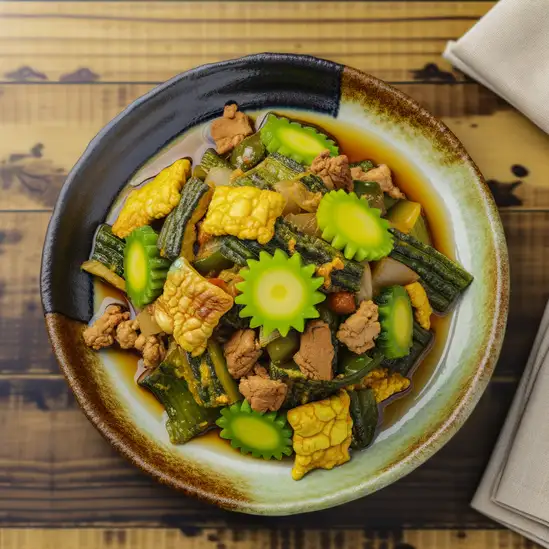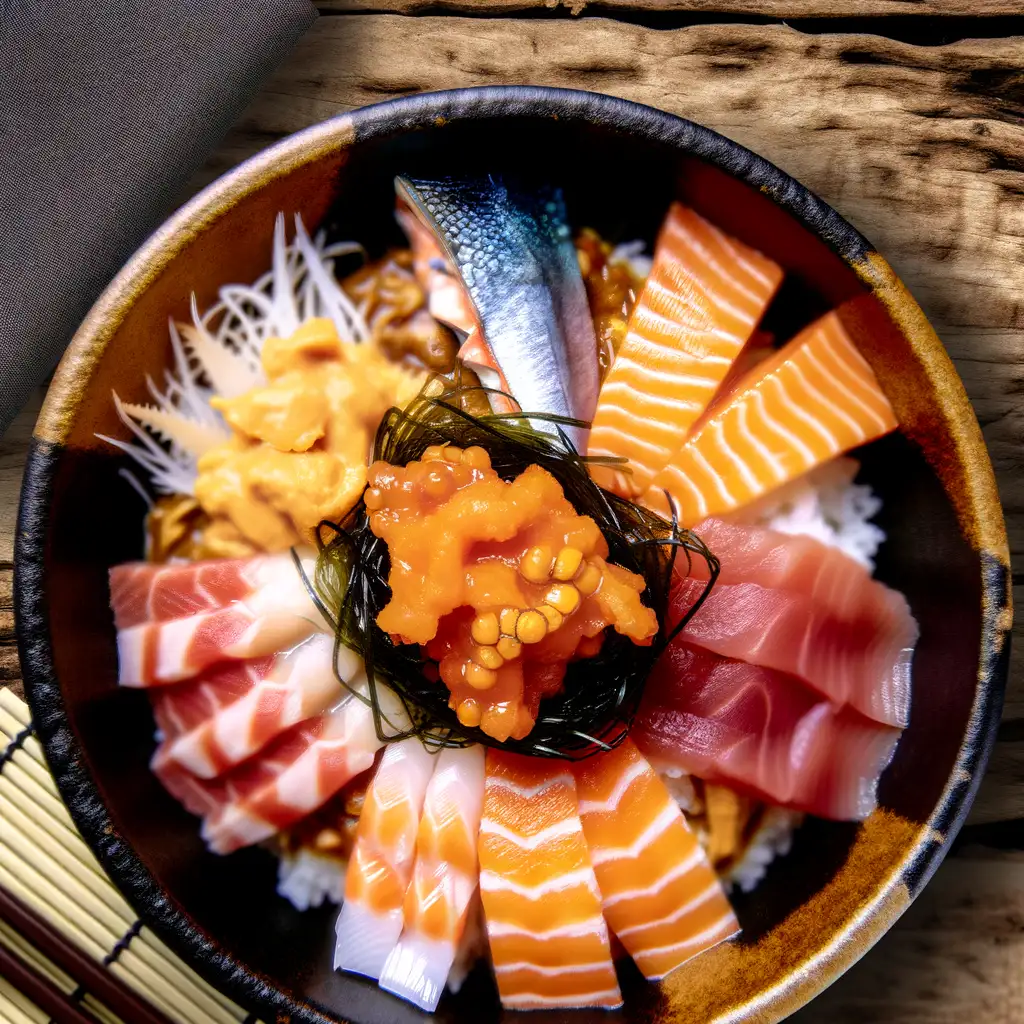



Imagine stepping into a place where the salty breeze from the sea mingles with the sweet aroma of freshly grilled seafood,and the streets hum softly with a blend of old-world charm and lively local spirit—that’s Hakodate for you. This city,perched on the southern tip of Hokkaido,feels like a cozy seaside town with a dash of cosmopolitan flair. As you wander through its historic districts,you’ll catch glimpses of red-brick warehouses turned into quirky cafes and shops,their windows glowing warmly against the crisp air. Hakodate’s vibe is relaxed but vibrant,especially when night falls. The city’s famous night view from Mount Hakodate is nothing short of magical—thousands of twinkling lights spread out like a glittering sea below you,making you feel like you’re floating above a dream. During the day,the morning market buzzes with energy,where vendors call out their freshest catches and you can savor the briny sweetness of uni or the tender snap of freshly caught squid right on the spot. What really sets Hakodate apart is its blend of cultures. You’ll notice a subtle Western influence in the architecture and cuisine,a legacy of its days as one of Japan’s first international ports. Strolling through Motomachi,you’ll find charming churches and pastel-colored houses that tell stories of a time when East met West. It’s a place where history feels alive,and every corner invites you to slow down,breathe in the sea air,and savor the simple pleasures of life.
The information on this page is currently being reviewed by Tripkliq and should be used as a guide only
Eng word: Hello
Eng pronunciation: Konnichiwa
Local language: こんにちは
Eng word: Goodbye
Eng pronunciation: Sayōnara
Local language: さようなら
Eng word: Thank you
Eng pronunciation: Arigatō
Local language: ありがとう
Eng word: How much
Eng pronunciation: Ikura
Local language: いくら
Eng word: Toilet
Eng pronunciation: Toire
Local language: トイレ
Eng word: Help me
Eng pronunciation: Tasukete
Local language: 助けて
Eng word: Yes
Eng pronunciation: Hai
Local language: はい
Eng word: No
Eng pronunciation: Iie
Local language: いいえ
Eng word: Excuse me
Eng pronunciation: Sumimasen
Local language: すみません
In 1854, Hakodate became one of the first Japanese ports to open to international trade following the Convention of Kanagawa, marking the beginning of Japan's modernization and internationalization.
Completed in 1866, Goryokaku Fort is a star-shaped fortress built for the defense of Hakodate. It later became the site of the last battle of the Boshin War in 1869. Today, it is a popular park and historical site.
Originally constructed in 1864, the Hakodate Magistrate's Office was the administrative center of the region. It has been meticulously reconstructed and serves as a museum showcasing the history of Hakodate.
Built in 1859, the Hakodate Orthodox Church is one of the oldest Russian Orthodox churches in Japan. Its unique architecture and historical significance make it a must-visit site.
Constructed in 1910, this Western-style building served as a public hall and is now a designated Important Cultural Property. It offers a glimpse into the architectural style of the Meiji era.
Mount Hakodate offers a panoramic view of the city and its surroundings. The mountain has historical significance as a strategic lookout point and is now a popular tourist attraction.
The Motomachi District is known for its historical buildings and foreign influence, reflecting Hakodate's history as an international port city. Visitors can explore various churches, consulates, and old residences.
Established in the early 20th century, the Hakodate Morning Market is a bustling area where visitors can experience the local culture and cuisine, particularly fresh seafood.
Founded in 1898, the Trappistine Monastery is the first women's monastery in Japan. It is known for its serene environment and beautiful gardens, offering a peaceful retreat for visitors.
In Hakodate Shi, the most common Power Adaptor is Type A, Type B.



A stir-fry dish that includes goya (bitter melon), tofu, and pork, reflecting the influence of Okinawan cuisine in the region.

Rich and creamy soft-serve ice cream made from Hokkaido's famous dairy, available in various flavors, including lavender and melon.

A seafood bowl featuring a variety of fresh sashimi served over rice, showcasing the region's abundant marine resources.

A local specialty consisting of squid stuffed with rice, often cooked in a sweet soy sauce, offering a unique blend of flavors.

A light soy sauce-based ramen that features a clear broth, often topped with fresh seafood, green onions, and bamboo shoots.

A salt-based ramen that is a specialty of Hakodate, known for its delicate flavor and often garnished with seafood and vegetables.
If you ever find yourself in Japan during winter,Sapporo-shi is a city that wraps you in a cozy,spirited embrace unlike anywhere else. Imagine crisp,snowy streets lined with softly glowing lanterns,the air tinged with the scent of pine and sizzling street food. The city hums with a lively yet laid-back energy—locals chatting over steaming bowls of miso ramen or clinking glasses of rich,locally brewed beer. It’s a place where modern city life meets nature’s quiet beauty,all under a sky that often blushes pink at sunset.
Walking through Odori Park,you’ll hear the crunch of fresh snow beneath your boots and catch glimpses of intricate ice sculptures shimmering in the cold air,especially during the famous Snow Festival. The architecture is a charming mix of clean,contemporary lines and historic European influences,giving the city a unique personality that feels both familiar and refreshingly new. Cafés spill warm light onto the streets,inviting you in to savor Hokkaido’s creamy dairy treats or a perfectly brewed cup of coffee.
What really makes Sapporo special is its genuine warmth—people here are friendly without being overbearing,proud of their city’s rich culture and natural bounty. Whether you’re wandering through the bustling Nijo Market tasting fresh seafood or hiking nearby trails that open up to breathtaking views,Sapporo feels like a place that invites you to slow down,breathe deeply,and savor every moment.
If you ever find yourself craving a place where history and charm wrap around you like a cozy scarf,Otaru is that kind of city. Nestled along the northern coast of Hokkaido,it feels like stepping into a living postcard—cobblestone streets lined with old brick warehouses whisper stories of a bustling port town from days gone by. As you stroll along the canal,the soft ripple of water mingles with the distant clink of glasses from quaint cafes,creating a peaceful soundtrack that invites you to slow down and savor the moment.
The air carries a subtle mix of salty sea breeze and the sweet aroma of freshly baked pastries from local bakeries. Don’t miss trying the sushi here—Otaru’s seafood is incredibly fresh,often caught just hours before it lands on your plate. Watching the chefs skillfully slice glistening cuts of fish feels almost like a performance,and the taste? Pure ocean magic.
What really makes Otaru special is its blend of old-world elegance and warm,approachable spirit. The city’s glass artisans craft delicate,shimmering works that catch the light just right,and wandering through their studios feels like stepping into a treasure trove. At night,the gas lamps along the canal flicker to life,casting a golden glow that turns the whole place into a quiet,enchanting dream. It’s a city that invites you to slow down,breathe deeply,and fall in love with its gentle rhythm.
If you ever find yourself craving a place where nature’s raw beauty meets a quietly vibrant culture,Aomori is where you want to be. The moment you step off the train,there’s this crisp,fresh air that feels like a deep breath for your soul. The city hums with a gentle energy—calm but alive—with the distant sound of waves from Mutsu Bay mingling with the rustle of leaves in the surrounding hills. In autumn,the fiery reds and golds of the forests seem to set the whole town aglow,while winter wraps everything in a soft,snowy hush that’s almost magical.
Walking through Aomori’s streets,you’ll catch the scent of fresh seafood drifting from the morning markets,especially the famous Nebuta Festival floats that seem to pulse with life even when they’re still. The locals have this warm,welcoming vibe,proud of their traditions but open-hearted and curious about visitors. Don’t miss trying the apples here—they’re some of the sweetest and juiciest you’ll ever taste,a perfect snack as you explore.
What really sticks with me about Aomori is how it balances quiet moments with bursts of color and sound. Whether you’re wandering through the serene Hirosaki Castle gardens or catching the vibrant energy of the Nebuta Festival at night,there’s a rhythm to the city that feels both grounding and exhilarating. It’s a place that invites you to slow down,breathe deeply,and soak in the simple,beautiful details of life.
If you ever find yourself wandering through Sendai,you’ll immediately notice this calm yet lively rhythm that pulses through the city. It’s a place where modern life blends effortlessly with nature’s quiet presence—giant zelkova trees line the streets,their leaves whispering in the breeze,and the scent of fresh greenery mingles with the faint aroma of grilled beef from local eateries. The city feels welcoming,like an old friend who’s both relaxed and quietly proud of its rich history.
Walking through Sendai,you’ll hear the gentle hum of daily life:the chatter of locals sipping coffee in cozy cafes,the distant clang of a festival drum,and the soft rustle of leaves in the nearby parks. The city’s character shines brightest during the Tanabata Festival,when colorful streamers flutter above the streets,filling the air with a festive buzz and a sense of shared joy. But even outside festival season,there’s a warmth in the way people move and interact here—unhurried,genuine,and kind.
Food lovers will find themselves enchanted by Sendai’s culinary scene. Imagine biting into juicy,tender gyutan (grilled beef tongue),a local specialty that’s smoky and rich,paired with a cold glass of sake or a crisp local beer. The markets buzz with fresh seafood and seasonal produce,inviting you to taste the region’s bounty. Sendai isn’t just a city to visit—it’s a place to feel,savor,and remember long after you’ve left.
If you wander into Nagasaki,you’ll immediately notice a gentle blend of history and warmth that wraps around you like a soft breeze off the harbor. This city carries a quiet resilience,where every street corner whispers stories of its past—both joyful and heartbreaking. As you stroll along the waterfront,the salty tang of the sea mingles with the aroma of simmering champon,a local noodle dish that’s as comforting as a warm hug on a chilly day. The colorful houses cascade down the hillsides,creating a patchwork quilt of life that feels both intimate and alive.
Nagasaki’s character is shaped by its unique crossroads of cultures. You’ll hear the faint echoes of Portuguese and Dutch influences in the architecture and the gentle chime of church bells mingling with the hum of bustling markets. The city’s spirit is reflected in its people—friendly,thoughtful,and quietly proud. Visiting the Peace Park or the Atomic Bomb Museum is a moving experience,but it’s balanced by the lively energy of Chinatown,where the sizzle of stir-fry and the chatter of vendors invite you to savor every bite and moment.
What makes Nagasaki truly special is how it embraces both reflection and celebration. Whether you’re watching the sunset paint the harbor in shades of gold or wandering through the lantern-lit streets during the vibrant festivals,there’s a sense of hope and renewal that stays with you long after you leave. It’s a place that invites you to slow down,listen,and feel the heartbeat of a city that’s been through so much—and still shines brightly.
If you ever find yourself craving a place where the ocean feels like a warm embrace and the pace slows just enough to savor every moment,Ishigaki is where you want to be. This island city in Okinawa Prefecture pulses with a laid-back energy that’s both refreshing and inviting. Imagine waking up to the gentle rustle of palm leaves and the distant call of seabirds,stepping outside to a sky so blue it almost feels unreal. The air carries a subtle mix of salty sea breeze and the sweet scent of tropical flowers,instantly grounding you in the island’s rhythm.
Ishigaki’s charm lies in its blend of natural beauty and vibrant local culture. The markets buzz with friendly vendors selling fresh mangoes,juicy pineapples,and the catch of the day—often still glistening from the sea. Don’t miss trying the local Ishigaki beef,tender and rich,or savoring a bowl of Okinawa soba that feels like a warm hug on a plate. The city itself is small but lively,with colorful shops and cozy cafes where you can sip on freshly brewed coffee while watching fishermen haul in their nets.
What really sets Ishigaki apart is how effortlessly it balances adventure and relaxation. You can snorkel alongside graceful sea turtles in crystal-clear waters one day,then unwind in a hammock with a book the next. The sunsets here are something else—fiery streaks of orange and pink melting into the horizon,making you feel like you’re witnessing a private show. Ishigaki isn’t just a destination; it’s a feeling,a gentle invitation to slow down,breathe deep,and soak in the simple joys of island life.
Tourists booking accommodations through unverified platforms may fall victim to fake listings, resulting in lost money and no place to stay upon arrival.
Tourists may encounter vendors selling fake or low-quality souvenirs at premium prices, claiming they are authentic local crafts or specialties.
Individuals posing as tour guides may offer their services to tourists, charging high fees for subpar or inaccurate information about Hakodate's attractions.
Some operators may offer fishing or sightseeing boat tours at inflated prices, providing a subpar experience or cutting the tour short without justification.
Some taxi drivers may take advantage of tourists by taking unnecessarily long routes or charging inflated fares, especially if the tourists are unfamiliar with the area.
Certain restaurants may inflate prices for tourists or add hidden charges to the bill, especially in areas popular with visitors like the Hakodate Morning Market.
Scammers may pose as charity workers or monks, asking tourists for donations to fake causes or religious organizations.
Japan has very strict drug laws, and this includes Hakodate Shi. The possession, use, or trafficking of illegal drugs is severely punished, with strict penalties including imprisonment and heavy fines. Even some medications that are legal in other countries may be restricted or require special permission in Japan. Tourists should ensure they are not carrying any prohibited substances and should carry necessary documentation for any prescription medications.
In Hakodate Shi, as in many parts of Japan, smoking is generally prohibited in many public places such as restaurants, cafes, and public transportation. There are designated smoking areas where smoking is allowed, and it is important to use these areas to avoid fines. Smoking on the streets is often restricted, especially in busy areas, and there may be specific zones where street smoking is prohibited.
Vaping is subject to similar regulations as smoking in Hakodate Shi. It is generally prohibited in non-smoking areas and public places. Vapers should use designated smoking areas to avoid penalties. It is advisable to check for specific signs and local regulations regarding vaping.
What are other people saying about Hakodate Shi?
Recent Social posts about Hakodate Shi
There is nothing to show you for now.